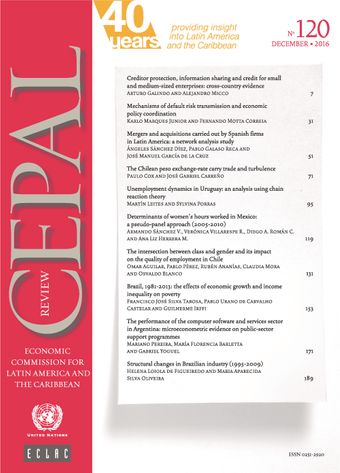-
Brazil, 1981-2013: The effects of economic growth and income inequality on poverty
- Source: CEPAL Review, Volume 2016, Issue 120, Dec 2016, p. 153 - 170
- Spanish
-
- 01 May 2017
Abstract
This study analyses the impact of economic growth and income inequality on poverty in Brazil in the years from 1981 to 2013. A dynamic panel model was used, estimated by the twostep generalized method-of-moments system developed by Blundell-Bond (1998), in order to analyse three scenarios: the first corresponds to the entire period covered by this study (i.e. 1981-2013); the second encompasses the years from 1981 to 1994 (the period leading up to the Real Plan); and the third is the period from 1995 to 2013 (the years following the implementation of the Real Plan). The results indicate that economic growth policies that promote an increase in income in conjunction with a reduction in income disparities are more effective in combating poverty in Brazil than those that focus only on raising mean income levels. The findings also point to the existence of a pro-poor form of growth in the period following the Real Plan.





